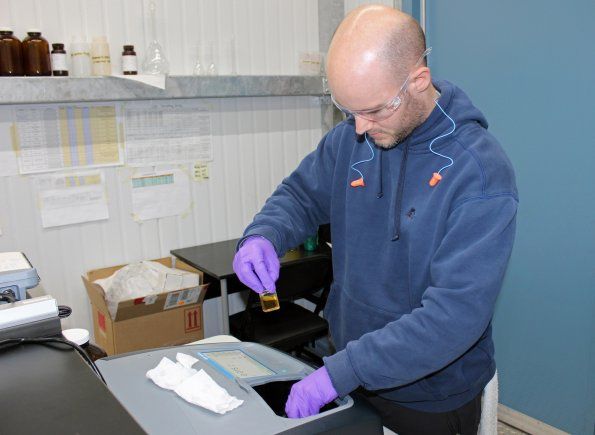Pilot Study Seeks Drinking Water Advancements for Nation's Capital
Published on by Water Network Research, Official research team of The Water Network in Technology
In an unassuming blue trailer just a few miles north of the heart of the District of Columbia, work is underway to improve the drinking water that serves more than 1 million people in and around the nation's capital - writes Sarah Lazo of the U.S. Army.

Ben Orchard, an environmental engineer and pilot operator with CDM Smith, handles water samples inside the Advanced Treatment Pilot Study trailer at the McMillan Water Treatment Plant, Washington Aqueduct, District of Columbia, Dec. 19, 2018. (U.S. Army photo by Sarah Lazo; Source: U.S. Army)
This effort is part of the Advanced Treatment Pilot Study for the Washington Aqueduct - a unique mission steeped in history. Washington Aqueduct has been owned and operated by the U.S. Army Corps of Engineers for nearly 160 years. Capt. Montgomery C. Meigs, an Army Corps officer and an 1832 graduate of the U.S. Military Academy at West Point, was personally directed by Congress to design and build an aqueduct to provide Potomac River water to the nation's capital. He did so in just a matter of years, with service beginning Jan. 3, 1859, supplying fresh water via gravity from Great Falls for domestic and commercial use, as well as firefighting.
The Future Treatment Alternatives Study (FTAS) involved Washington Aqueduct staff and customers; water treatment experts from private industry, utilities, regulatory agencies and academia; and representatives from advocacy groups and the public health sector.
The primary goals of the Advanced Treatment Pilot Study include reducing taste and odor compounds; enhancing disinfection through a multi-barrier approach to provide additional protection from potential contaminants in the source water; and achieving a year-round water production capacity of 120 million gallons per day at the McMillan Water Treatment Plant (WTP). The pilot study is also designed to evaluate changes in disinfection byproducts and corrosion in the distribution system piping that might result from new treatment processes if implemented.
Media
Taxonomy
- Treatment
- Decontamination
- Drinking Water Treatment
- Water Treatment & Control
- Industrial Water Treatment
- Purification
- Decontamination
- Technology
- Water Treatment Solutions
- Industrial Water Treatment
- Research
- Contaminant Removal
- Water Supply
- Quality Maintenance
- Water Supply Design
- Water Pollution Control
- Drinking Water Managment
- Water Management
- Urban Water Supply
- Drinking Water
- Water Quality Management
- Infrastructure
- Distribution Network Management
- Disinfection
- Distribution
- Water Supply Protection